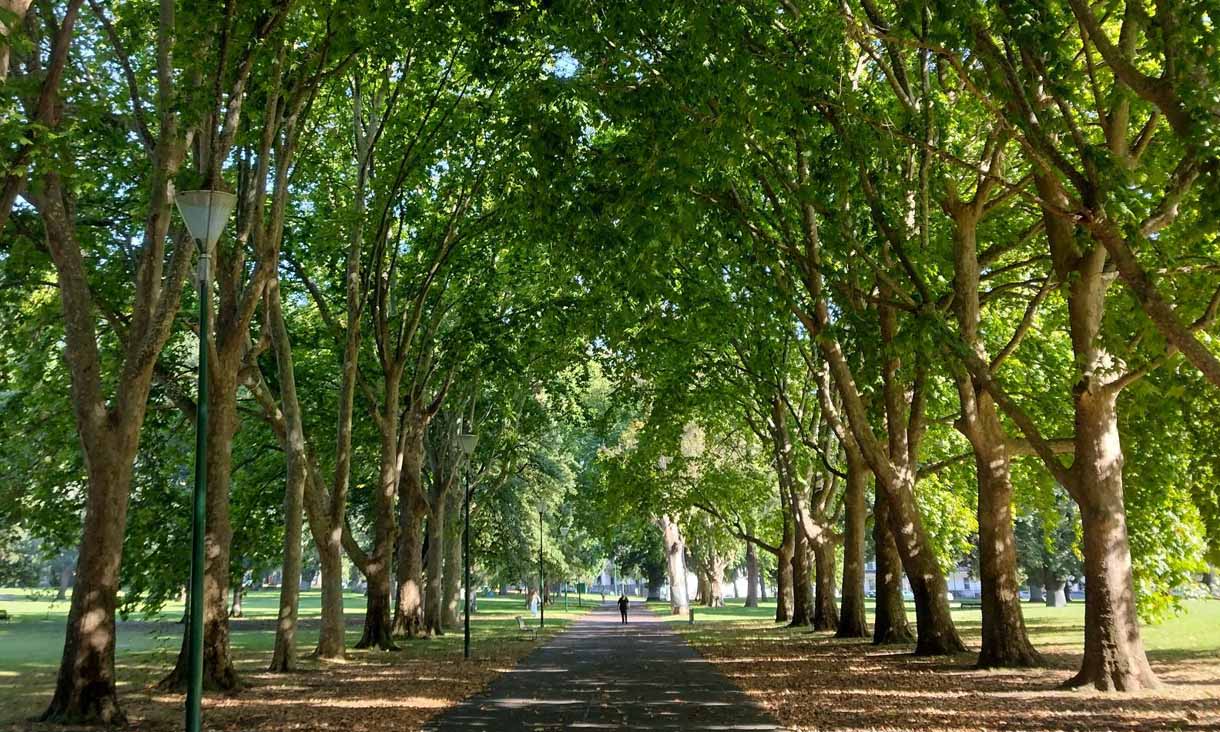Suburban development
The plan characterised itself as supporting existing development trends and the 1954 Metropolitan Planning Scheme.
This meant supporting the development of suburbs, which was accomplished through the proposal of an extensive road network.
A look at any new estate today shows this legacy, with quiet neighbourhood streets connected to major divided arterial roads, carrying residents to their destination.
This has predominated the built form of Melbourne ever since with more suburbs still largely planned along these freeway corridors, expanding on the fringes.
For many, especially first home buyers, these ‘greenfields’ areas are an accessible source of affordable housing.
However, they are increasingly disconnected from substantial public transport, becoming more car dependent in a vicious cycle whereby the car use predicted by the 1969 Plan becomes locked in by failures to provide alternatives.
You only have a bus…
The plan proposed only modest expansions of the rail system, but extensive expansion of the bus network.
This has essentially formed the pattern of public transport delivery that has occurred and for most suburban areas, buses are the primary provider of public transport.
The 1969 Plan proposed an expansion from 205 bus routes, totalling 1,813 km, to 238 routes, totalling 2,977 km.
And as predicted, the provision in many suburban areas of Melbourne is limited to buses. Melbourne currently has 352 bus routes, with a total length of over 6,000 km.
The legacy of this is that for many suburban areas buses are the only option.
Notoriously, the failure to deliver the Doncaster railway (which was proposed in the plan) has left the local area of Manningham totally dependent on buses as the sole source of public transport. Recently announced proposals, such as the Suburban Rail Loop, may place Melbourne on a different path.
…And why you have to have a car
Mass car ownership was seen as the future by the plan and the 1950s and 60s saw an expansion and solidification of suburban development in Melbourne.
Further to this, there was also a shift towards car centred design.
Shopping malls began opening across Melbourne, following the arrival of Chadstone in 1960.
Drive in cinemas sprung up throughout the expanding edges (although few remain today) and other forms of drive-through such as restaurants became increasingly popular.
The plan recognised this trend and proposed a large freeway network to support this development.
Of course, this also meant Melbourne would need more cars.
It forecast car ownership rising from 239 cars per 1,000 people in 1964 to 380 cars per 1,000 people in 1985.
The study claimed that this level, of ‘380 cars per 1,000 persons would represent the saturation level’ and that ‘beyond this it was predicted that car ownership would increase only in proportion to population growth.’
In 2019 there were 774 motor vehicles per 1,000 people, with 604 of these passenger vehicles.
A potentially unseen consequence of the 1969 Plan is that it built the need to own a car into the fabric of Melbourne.
This explains our high car ownership rate, and high car use, with 72% of journeys made by car.
An expansive highway and freeway network, an ever-expanding metropolis, car centric new suburbs, and a lagging public transport system have made it a fait accompli that to travel across Melbourne, you must have a car - a mark of 1969 that we are still grappling with.
Liam Davies is a PhD candidate at the RMIT Centre for Urban Research. He is currently researching housing affordability in Victoria. He will be presenting at the event Looking Back and Going Forward: The Melbourne Transport Plan 50 Years On, a public event hosted by RMIT University and supported by Swinburne University, Monash University and the University of Melbourne.
Story: Chanel Koeleman








